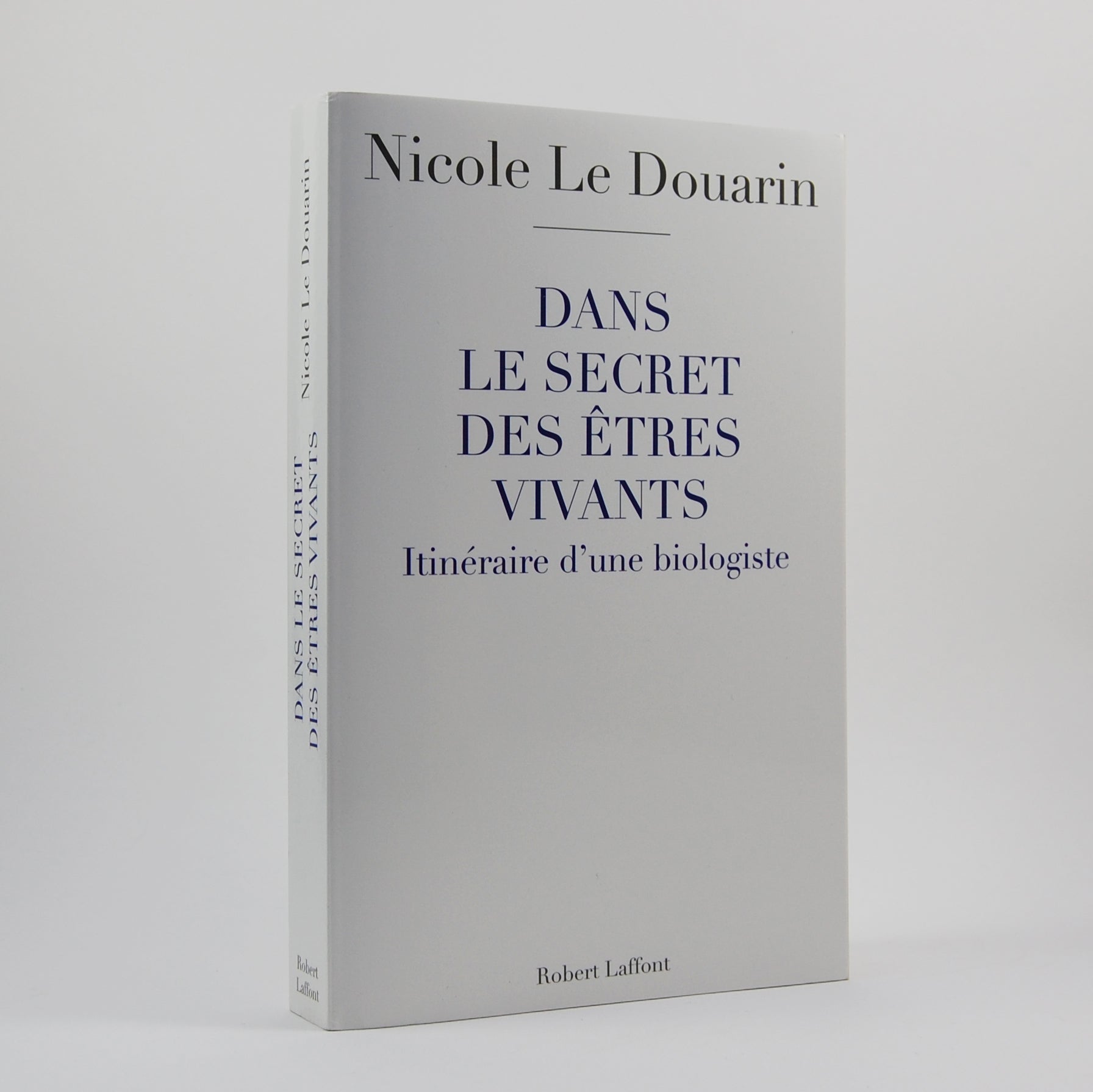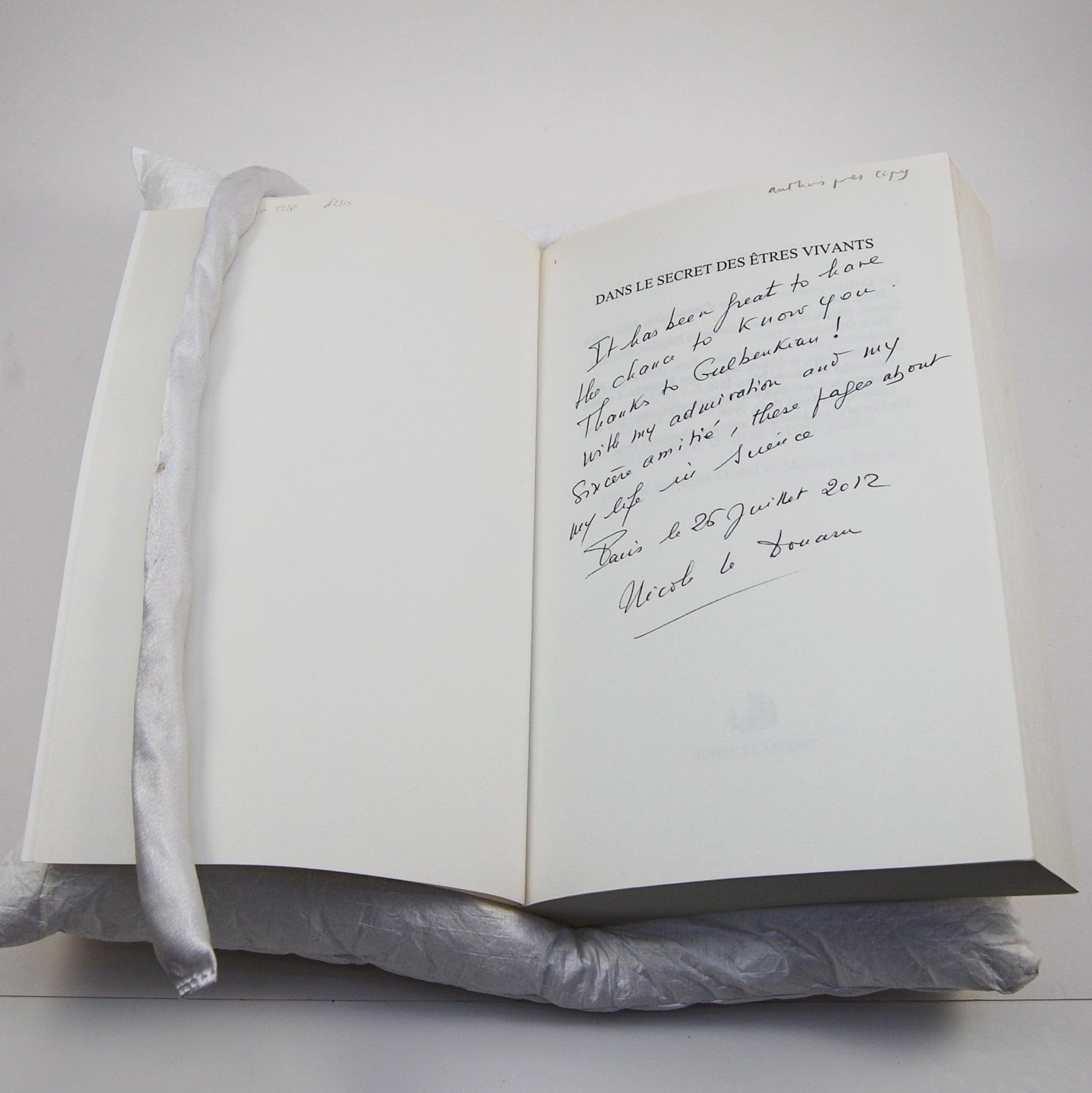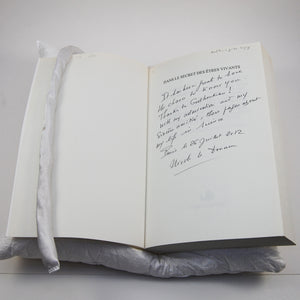(Brenner, Sydney) Douarin, Nicole le | Dans le Secret des Êtres Vivants
£250.00
-
First edition, first impression, paperback issue. Presentation copy inscribed by the author to Nobel Prize-winning biologist Sydney Brenner on the half title, “It has been great to have the chance to know you. Thanks to Gulbenkian! With my admiration and my sincére amitié, these pages about my life in science. Paris, le 26 Juillet 2012, Nicole le Douarin”. Gulbenkian probably refers to the Calouste Gulbenkian Foundation, a philanthropic organisation which may have held a conference or other event at which Douarin and Brenner met.
Recipient Sydney Brenner (1927 - ) has been a leader in the field of genetics almost from the moment he received his doctorate at Oxford in 1954. He joined Francis Crick’s laboratory in 1956, and they did groundbreaking research on how DNA is decoded by cells. Brenner proposed that the nucleotides which comprise DNA (adenine, guanine, thiamine and cytosine) are read by the cell in sets of three called codons, with each codon representing an amino acid (for example, three adenines in a row is the codon for the amino acid lysine). A gene is simply a string of codons that directs the production of a protein molecule from individual amino acids. He also correctly predicted the existence of messenger RNA, the molecule that carries the genetic code from the nucleus to the ribosomes, where the translation process occurs.
Following this work, it was Brenner’s efforts to establish a new laboratory organism for the study of genetics that led to his Nobel Prize. “Beginning in 1965, he began to lay the groundwork to make C. elegans, a small, transparent nematode, into a major model organism for genetics, neurobiology and developmental biology research. As a direct result of his original vision, this tiny worm became the first animal for which the complete cell lineage and entire neuronal wiring were known. Today, more than 1,000 investigators are studying C. elegans, and Brenner’s work was further honored when a closely related nematode was named Caenorhabditis brenneri” (Salk Institute biography).
Author Nicole le Douarin (1930 - ) is a leader in the field of developmental biology. She has designed important techniques for studying differentiation in embryos, most importantly the creation of chimeras in which cells from two different species can be individually tracked as they develop into organ systems. Crucially, she used this technique to elucidate the early development of the nervous and immune systems. Douarin has recieved numerous accolades for her work. “In 1988 she was only the third woman in 500 years to be admitted as a member of the College de France. In 1989 she was elected as a member of the US National Academy of Science and in 1990 as a fellow of the Royal Society. She also received the Louis-Jeantet Prize for Medicine in 1990 and in 1991 she became an officer of the Légion d’Honneur. In 1993 she received the Louisa Gross Horwitz Prize from Columbia University. She is an honorary fellow of the Academy of Medical Sciences (2002) and was the first recipient of the Pearl Meister Greengard Prize for women in science and biology (2004)” (The Embryo Project Encyclopedia).
-
...Itinéraire d'une Biologiste. Péreface de Mona Ozouf et Michelle Perrot.
Paris: Robert Laffont, 2012.
Pefect bound. Original white wrappers printed in blue and black. With the publisher’s wraparound band. Minor bump to head of spine. An excellent, fresh copy.










